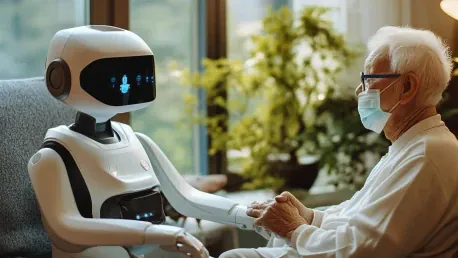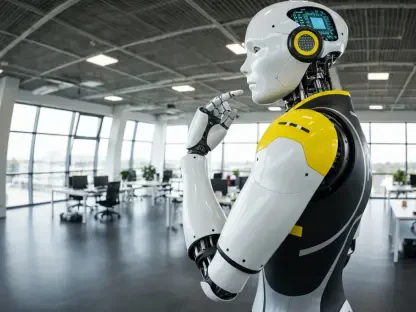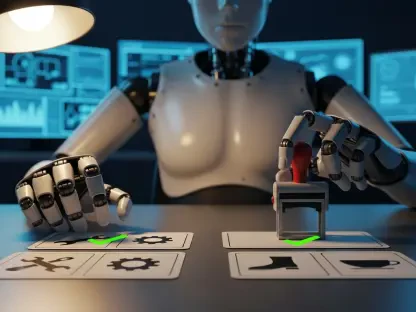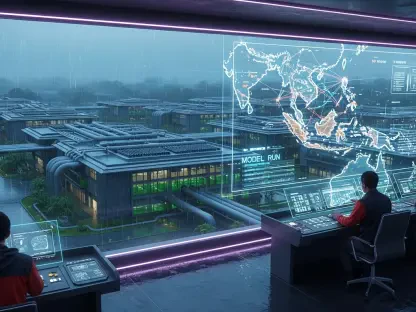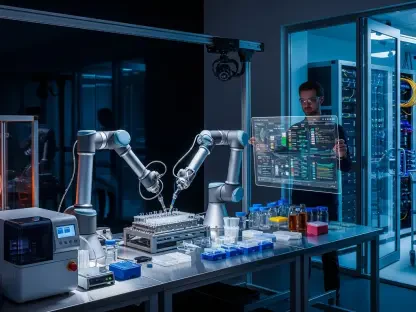As societies around the world continue to face aging populations and rising numbers of patients with neurological disorders, innovative solutions are becoming increasingly critical. Researchers at the University of Tsukuba have developed a human-collaborative robot that promises to revolutionize care for elderly individuals and those grappling with intractable neurological diseases. This advanced technology operates within a cybernics space, a unique environment where physical and cyberspace seamlessly integrate, providing invaluable support in daily activities. The primary aim is to mitigate the challenges associated with declining motor and cognitive functions, often linked to difficulty in communication, anxiety, and depression.
Advanced Interaction with Multimodal Vital Information
Central to the functionality of the human-collaborative robot is its ability to interpret human intentions through multimodal vital information. Utilizing both an arm-hand system and an IoT system, the robot operates without physical or spatial constraints. This state-of-the-art approach involves the integration of bioelectrical signals and gaze information to discern user intentions. Consequently, the robot can effectively manage daily tasks and control IoT devices within living environments. This capability ensures a high level of autonomy for users, significantly improving their quality of life.
The concept of a cybernics space—the transition zone between physical space and cyberspace—allows for three versatile modes of human-robot interaction. This adaptive feature enables the robot to seamlessly transition between various tasks, ensuring that it can promptly respond to the user’s needs. The integration of bioelectrical signals, which detect muscle movements, and gaze tracking ensures that the user’s intentions are accurately understood and carried out. This results in a cohesive and intuitive interaction experience, unlike traditional robots that rely solely on pre-programmed instructions.
Enhancing Independence and Reducing Care Burden
Verification experiments have demonstrated the robot’s efficacy, highlighting high success rates and user satisfaction in daily movements and various tasks. The practical implications of such technology are profound, as it greatly enhances users’ independence. This increase in autonomy has the potential to significantly reduce the burden on nursing care services, which are often stretched to their limits. Moreover, the financial strains associated with long-term care and medical costs can be alleviated, presenting a cost-effective solution to a growing problem.
The ability of the robot to manage daily activities extends beyond mere physical assistance. It provides psychological and emotional support by reducing feelings of helplessness and dependence, which are prevalent among the elderly and those with neurological conditions. The seamless integration of the robot within the user’s living environment ensures it becomes a natural extension of their daily routine, rather than an intrusive piece of technology. This aspect is crucial in fostering acceptance and utilizing technology effectively in caregiving settings.
Future Prospects in Human-Robot Collaboration
Published in Frontiers in Robotics and AI, this groundbreaking research on integrating robotics with multimodal vital information within cybernics spaces emphasizes the tremendous benefits of such innovations. The human-collaborative robot exhibits great potential in transforming elderly care and providing substantial support to patients with neurological diseases. By leveraging human-robot interaction technologies to interpret and act upon motor intentions, the overall quality of life for affected individuals is poised to improve significantly.
Looking ahead, the continued development and refinement of this technology hold the promise of even greater advancements. Researchers and developers are focused on enhancing the robot’s capabilities, ensuring it can cater to a wider range of needs and adapt to more complex environments. The potential for such robots to be customized for individual users based on specific health conditions and personal preferences is particularly exciting. This adaptability makes the robot an indispensable tool in personalized care approaches, aligning with the evolving demands of modern healthcare.
Transforming Lives and Healthcare Systems
As societies across the globe contend with aging populations and increasing cases of neurological disorders, innovative solutions are becoming more essential than ever. At the forefront of this effort, researchers at the University of Tsukuba have developed a revolutionary human-collaborative robot designed to transform the care of elderly individuals and those suffering from severe neurological conditions. The advanced technology functions within a cybernics space, a groundbreaking environment where the physical world and cyberspace blend seamlessly to provide critical daily assistance. The main goal of this innovation is to alleviate the issues arising from deteriorating motor and cognitive abilities, conditions frequently associated with communication difficulties, anxiety, and depression. By offering such support, the robot aims to improve the quality of life for individuals struggling with these debilitating challenges, ushering in a new era of compassionate and effective care.
